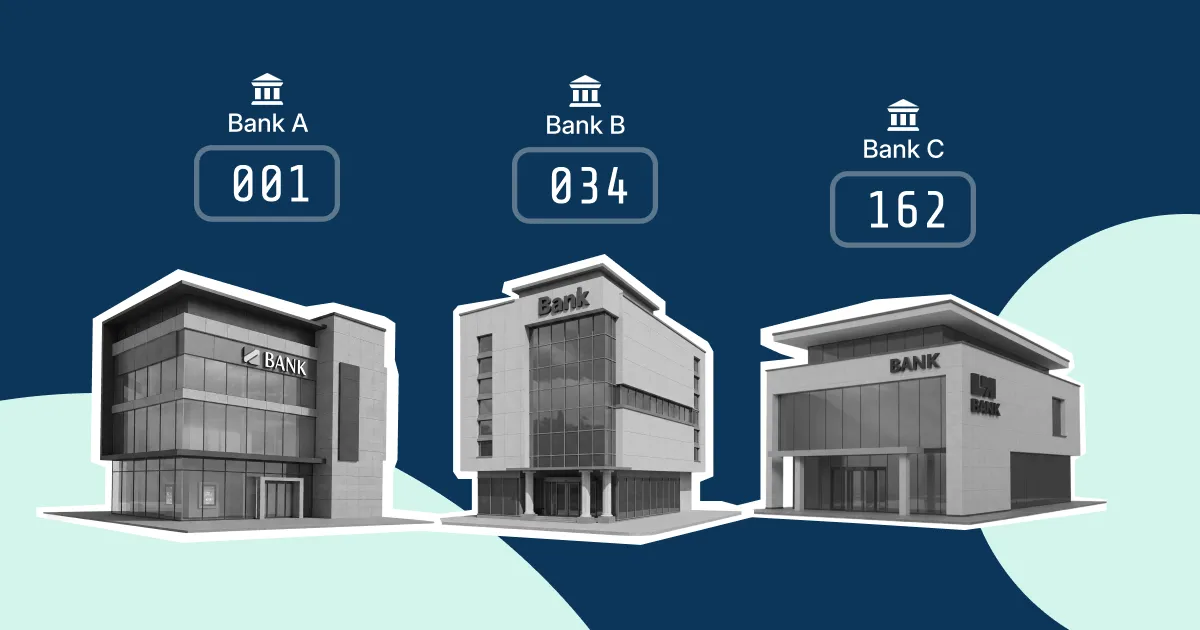Summary
What Is the Mid-market Rate?
When it comes to foreign exchange, mid-market rates play an important role. These rates refer to the average exchange rates between two currencies in the global foreign exchange market without any extra fees or markups. They're like the "middle ground" between a currency's buying and selling prices. The mid-market rate is considered the fairest rate you can get when it comes to currency exchange.
Why Is Understanding Mid-market Rate Important for Businesses?
Well, it serves as a basis for comparison. Understanding the mid-market rate benefits businesses when making international vendor payments or money transfers. As a business owner, understanding the mid-market rate enables you to evaluate whether the rates offered by banks or currency service providers are fair and competitive. It provides you with the necessary information to make informed decisions about currency exchanges and ensures you get a good deal for your business transactions.

Knowing the mid-market rate helps you plan and budget your international payments more effectively. It also allows you to negotiate better rates with banks and currency providers. Lastly, understanding the mid-market rate helps you make informed financial decisions, assess the impact of currency fluctuations on your business, and manage currency risks.
However, it's essential to understand that mid-market rates are theoretical rates. They indicate the value of one currency compared to another at a specific moment. In reality, when you exchange currencies, the rates you encounter may be different. That's because there are additional factors to consider, such as transaction fees, commissions, and the ever-changing nature of the market. Banks, currency exchange providers, or brokers usually add these costs, which can cause the rates you get to deviate from the mid-market rates.
So, while mid-market rates provide a valuable reference point, it's good to be aware that the actual rates you'll encounter might vary. It's always a good idea to consider these additional costs and check around to find the best deal when exchanging currencies.
How Are Mid-market Rates Calculated?
In foreign exchange (FX), mid-market rates are calculated using the midpoint between the bid and ask prices for a currency pair. The bid price represents the highest price buyers are willing to pay, while the asking price represents the lowest price sellers are willing to accept.
To calculate the mid-market exchange rate, you add the bid and the asking prices together and divide the sum by 2. This provides an average or midpoint value that reflects the theoretical exchange rate between the two currencies.
Here's the formula: Mid-market rate = (Bid price + Ask price) / 2
Let’s understand this with an example.
Suppose you're a business owner in Singapore importing goods from Europe and need to convert SGD to Euros (EUR) to make the payment.
You check the exchange rates and find that the bid price for 1 SGD is 0.6700 EUR, while the asking price is 0.6710 EUR. The mid-market rate would be the average of these two prices, which is 0.6705 EUR.
This rate represents the midpoint between what buyers are willing to pay and what sellers ask for in the interbank market.
Let's say you want to convert 10,000 SGD to Euros using the mid-market rate of 0.6705 EUR/SGD. To calculate the amount in Euros, you would multiply 10,000 SGD by 0.6705 EUR/SGD.
Amount in Euros = 10,000 SGD * 0.6705 EUR/SGD = 6,705 EUR
Therefore, based on the given mid-market rate, you would need to pay 6,705 Euros to obtain the equivalent value of 10,000 SGD. However, additional fees or charges may apply depending on the service provider or bank you use for the currency conversion.
What Factors Contribute to the Determination of Mid-market Rates?
Market conditions and economic indicators greatly influence mid-market rates. These factors play a crucial role in shaping the supply and demand of currencies, directly impacting their exchange or mid-market rates.
Here's a breakdown of how each factor affects the mid-market rate.
1. Supply and demand
When the demand for a currency is high, its value tends to increase, resulting in a higher mid-market rate. Conversely, if the supply of a currency exceeds the demand, its value may decrease, leading to a lower mid-market rate.
Factors such as economic growth, interest rates, inflation, and political stability can influence the supply and demand of currencies.

2. Economic Factors
Various economic indicators provide insights into a country's economic health and can impact mid-market rates. For example:
- Gross Domestic Product (GDP): A strong GDP growth rate indicates a robust economy. This may attract foreign investment and increase demand for the currency, thereby increasing the value of the mid-market exchange rate.
- Interest rates: Interest rates set by central banks affect exchange rates. Higher interest rates attract investors looking for better returns, increasing demand for the currency and potentially raising its value. Lower interest rates can decrease demand, leading to lower mid-market rates.
- Government debts: Concerns about a country's ability to repay its high government debt can lead to a lack of confidence in the currency, potentially causing it to depreciate.
- Political stability and events: Political stability and geopolitical events can significantly impact currency values. Uncertainty, such as political instability, elections, or policy changes, can create fluctuations in exchange rates. Stable political environments usually have a positive effect on currencies.
- Trade agreements: Trade agreements can impact currency mid-market exchange rates. Countries with favourable trade agreements promoting economic integration and reducing barriers can increase trade and investment, strengthening their respective currencies. Disputes or termination of trade agreements can create uncertainty and affect exchange rates.
- Employment Rate: The employment rate affects consumer spending power. When more people are employed, there is a higher disposable income, which can lead to increased consumer spending. This, in turn, can drive domestic economic activity and increase the demand for the country's currency. Higher demand for the currency can contribute to a stronger mid-market rate.
3. Market Sentiments
The behaviour and sentiment of market participants can create shifts in mid-market rates. Positive sentiment, driven by optimism or confidence in a particular currency, can increase demand and its value. Conversely, negative sentiment can lead to a decrease in demand and currency depreciation.
Let's delve into the market participants and their influence on mid-market rates.
- Central Banks: They directly influence exchange rates through their monetary policy decisions. They can influence the mid-market rates by changing interest rates, implementing programs to increase or decrease the money supply (quantitative easing), or intervening in the foreign exchange market.
- Banks and financial institutions: They can affect mid-market rates as they are involved in currency trading and managing portfolios. Their actions in buying or selling currencies can influence the supply and demand in the market, which in turn impacts the exchange rates. Their large trading volumes and influence can help align exchange rates and reduce differences between markets.
- Individual traders: Individual (or retail) traders also trade in currency. They closely monitor and react to economic data releases, geopolitical events, and policy announcements that can impact interbank rates. Even though their individual trades may be relatively smaller than banks or financial institutions, individual traders' collective actions can still impact exchange rates, particularly in more accessible and liquid markets.
- Institutional Investors: These include those who invest in pension funds, hedge funds, and mutual funds. These investors have the power to influence exchange rates because they trade large amounts of money in different currencies. Fund managers of such schemes make decisions by carefully analysing crucial economic information, such as economic indicators and market trends.
Additionally, different market participants employ various trading strategies, such as technical analysis, fundamental analysis, or algorithmic trading. These strategies can influence their buying and selling decisions, leading to fluctuations in exchange rates.
By now, you probably understand that these factors are all connected, and exchange rates can be affected by multiple factors working together.
How To Find The Mid-market Rate Online?
The mid-market exchange rate is the rate people usually refer to when discussing the interbank exchange rate between two currencies.
It's the rate you'll see if you search on Google or check currency providers like Reuters or XE. The mid-market rate can vary slightly across different organisations due to their use of different data sets. However, the variations are typically minimal.

How Can the Mid-market rate Be Used to Avoid High FX Rates?
Before sending money internationally, comparing the interbank exchange rates provided by different banks with the mid-market rate is helpful.
Let's say you're going on a business trip to the United States and must exchange your Singapore Dollars (SGD) for US Dollars (USD). You look up the exchange rates and see that the bid price for 1 SGD is $0.7410, while the asking price is $0.7420.
The mid-market rate is the average of these two prices, which is $0.7415. This rate represents the mid-market value without any extra fees.
If you notice that the interbank rate in Singapore is unacceptably higher than this mid-market rate, it could mean they're adding extra fees or increasing the exchange rate.
Don't worry! You have options.
You can explore other providers that offer rates closer to the mid-market rate, which can help you avoid unnecessary charges. Using the mid-market rate as a guide, you can find better deals and more value for your foreign currency transactions.
It's all about ensuring you're not paying high fees and getting the best exchange rate possible.
Modern financial service providers typically charge much lower transfer fees and have significantly smaller exchange rate margins than banks.
Aspire - Your Solution for Cost-Effective Global Payments and Transfers
We offer a solution that allows businesses to save money on global transfers and vendor payments. Aspire offers a seamless way to conduct global payments and international transfers with remarkably low fees. Our services ensure transparent and affordable fees for converting and making payments in over 30+ currencies. Our multi-currency account and corporate cards empower you to transcend borders and manage your finances efficiently.
Besides, with Aspire’s advanced spend management tools, you can track and manage all your business expenses in one place, making it easier to manage and grow your business.










%201.webp)


.webp)